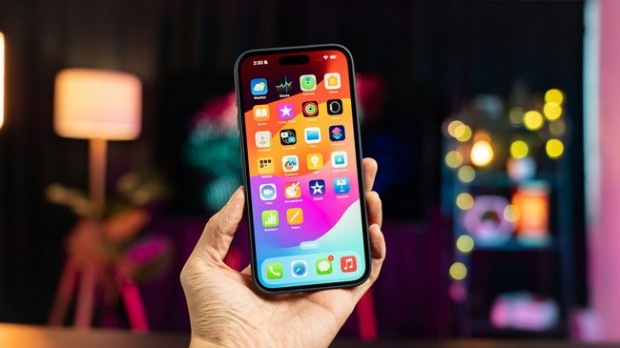How Stolen Device Protection Works in iOS 17.3: Unveiling the Security Mechanism
How Stolen Device Protection Works in iOS 17.3: Unveiling the Security Mechanism
Austin Jay
On January 22, Apple released iOS 17.3, a significant update for iPhone users. The update includes bug fixes and introduces several notable features, with the collaborative playlist feature in Apple Music being a standout addition. This feature allows users to create playlists collaboratively with friends, enhancing the social aspect of the music streaming service.
A significant aspect is the addition of Stolen Device Protection, a security initiative to protect users' data from being provided following iPhone theft.
Although this feature is not mandatory, Apple encourages users to turn it on because of the importance of keeping accounts secure and personal information private. The update reveals Apple's strong intentions to provide a superior user experience, fix security issues that have already arisen before all the identified critical problems have been resolved, and continue implementing changes to optimize its mobile platform's performance.
Increasingly, users are encouraged to exploit these latest features and begin using them to create an improved iPhone experience.
Enhanced Security With Stolen Device Protection for Your iPhone
Apple has rolled out a significant security feature with its iOS 17.3 update, Stolen Device Protection. This feature adds an extra layer of safeguarding for your iPhone, especially if it is in unauthorized hands. According to CNET's David Lumb, activating Stolen Device Protection involves entering your biometric information when accessing sensitive settings and data outside your usual locations, such as your home.
Some essential functions requiring biometric authentication include accessing saved passwords, utilizing Safari's autofill for payment methods, disabling Lost Mode, erasing device content, applying for a new Apple Card, and more.
Stolen Device Protection introduces a Security Delay mechanism, prompting biometric authentication twice when modifying specific settings in unfamiliar locations. Apple emphasizes protecting critical actions like changing Apple ID passwords, signing out, or altering security settings.
While Stolen Device Protection doesn't cover every aspect, such as Apple Pay transactions, Apple recommends enabling this optional feature for an added security layer.
Stay informed about how this advanced protection can enhance your iPhone security, and consider allowing it today.
Also Read: IOS 17.3 Beta 2 Update Causes IPhone Bricking: Here's How To Fix It Without Losing Data
How to Activate the Stolen Device Protection Feature for your iPhone
To activate the robust Stolen Device Protection feature on your iPhone, follow these straightforward steps:
- To add an extra layer of security, turn on two-factor authentication by going to settings, selecting "Password & Security," and checking the box.
- Set up essential security features: Ensure your iPhone is safeguarded with a password, and activate Face and Touch ID. Don't forget to turn on the Find My iPhone feature to locate your device if needed.
- Activate significant locations: Enhance security by enabling the crucial locations option in Location Services.
- Access Face ID & Passcode: In settings, locate "Face ID & Passcode," enter your password, and find the "Stolen Device Protection" toggle. Activate it with a simple tap to fortify your iPhone's security.
These steps will fortify your device against potential threats, ensuring your data remains protected even in challenging situations.
Stolen Device Protection introduces added security measures when your iPhone is away from familiar locations like home or work. Activated through the Significant Locations setting, it enhances protection but doesn't apply when your iPhone is in recognized safe zones.
This exclusion ensures convenience but poses a security risk if someone at home knows your passcode, bypassing these measures. To benefit from Stolen Device Protection's advanced security, users must activate and configure Significant Locations, striking a balance between security and convenience.
Related Article: How To Activate Stolen Device Protection On Your IPhone With IOS 17.3
most read
related stories
more stories from How To
-
How to Play Retro Video Games on iPhone Using Delta Emulator
Unlock retro gaming nostalgia on your iPhone with Delta Emulator. Learn how now!
ernest hamilton -
Squad Busters' Soft Launch: Initial Impressions and Global Potential
Discover the potential of Squad Busters' soft launch and its global impact. Read now!
ernest hamilton -
'Monopoly GO:' Unveiling Electric Escape Rewards and Achievements
Embark on an electrifying adventure in Monopoly GO! Uncover Electric Escape rewards and achievements. Don't miss out on the excitement!
ernest hamilton -
'Monopoly GO:' What Happens to Leftover Shovels (Pickaxes) Post Anniversary Treasures Event
Discover what happens to leftover shovels after the 'Monopoly GO' Anniversary Treasures event. Read now for all the details!
ernest hamilton -
'Monopoly GO:' Unlock Go for Gold Gala Rewards and Achieve Milestones
Unlock exclusive rewards and reach milestones in 'Monopoly GO: Go for Gold Gala.' Don't miss out on the fun!
ernest hamilton -
'Monopoly GO:' Discover All Anniversary Bash Rewards and Milestones
Dive into 'Monopoly GO's' Anniversary Bash with exclusive rewards and exciting milestones. Don't miss out!
ernest hamilton -
'MONOPOLY GO!' Clean Quest Tournament Event: Milestones, Rewards, and Exciting Details
Discover the exciting details of the 'MONOPOLY GO!' Clean Quest Tournament Event, from milestones to rewards. Get ready for an adventure!
ernest hamilton -
How to Photograph April 8th's Solar Eclipse with Your Smartphone
Capture the moment! Learn how to photograph April 8th's solar eclipse with your smartphone. Follow our guide for stunning eclipse shots. Start shooting now!
ernest hamilton














